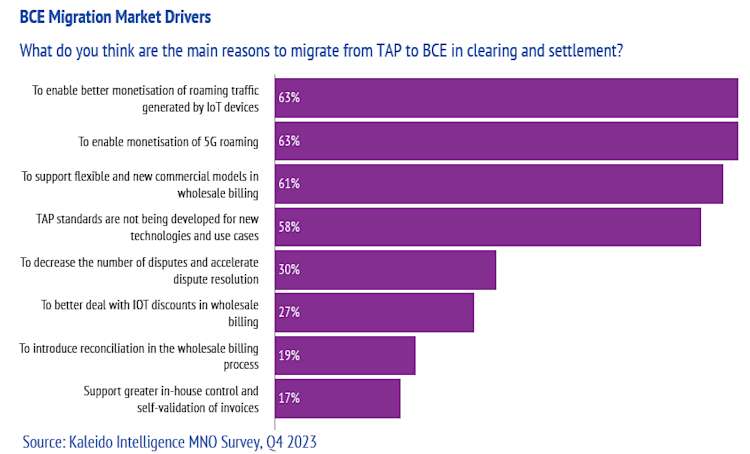The Future of Roaming Monetization
The landscape of telecommunications is rapidly evolving. The evolution of the mobile ecosystem with the development of mobile devices and their growing dependence on connectivity has stimulated the adoption of new mobile platforms such as 5G. However, the cost of implementing 5G networks can be an expensive investment for mobile network operators (MNOs). As a result, many MNOs are looking for ways to quickly monetize the 5G services they can offer to offset those infrastructure costs. One area that is poised for significant transformation is roaming monetization.
The Current State of Roaming
Roaming is traditionally a lucrative revenue stream for telecom MNOs. With programs like roam from home, human roaming traffic volumes have expanded but with limited financial return. Global travel continues to heal from the pandemic and enterprises are looking to further develop their international presence by implementing scalable next-generation mobile applications such as the Internet of Things (IoT).
The introduction of 5G and IoT presents new opportunities for roaming monetization. With 5G, network slicing allows MNOs to provide differentiated services and benefits opening up avenues to offer premium services through expanded use cases. IoT devices, on the other hand, are expected to rely heavily on roaming services creating a whole new market segment for MNOs to tap into.
These two opportunities are prime for future 5G revenue development.

Enter Billing and Charging Evolution (BCE)
As the new prevailing standard, Billing and Charging Evolution (BCE) plays a crucial role in 5G roaming. As the telecommunication industry transitions to 5G, traditional billing and charging mechanisms such as Transfer Account Procedures (TAP), are proving to be too rigid and complex to support future technologies like IoT and the variety of use cases that 5G brings. This is where BCE comes in. BCE was developed by GSMA to address TAP’s limitations. BCE is a simplified and flexible optional settlement method tailor-made to suit the future wholesale roaming settlement needs of MNOs.
BCE is designed to support wholesale roaming in 5G and IoT, and it offers the flexibility to support new services (such as 5G network slicing and IoT), advanced business models, expanded partner ecosystems, and enhanced charging and discounting models. It allows MNOs to agree on settlement windows between themselves and use commercial models that enable monetization such as volume and tier agreements. BCE also supports a range of charging and settlement models including volume-based charging.
BCE is essential for supporting roaming over 5G Standalone (SA). It enables the required flexibility that MNOs need to implement new billing models that cover large partner ecosystems in multiple countries, and it also enables them to standardize billing between groups. BCE is a critical component to the success of 5G roaming, offering a more adaptable, transparent, and efficient billing and charging system that can keep pace with the advanced services and high data throughput of next-generation networks.

Syniverse guiding MNOs through the implementation of BCE
As a leader in the development of clearing and settlement technologies, Syniverse was an early adopter of the BCE standard, helping to guide its initial and continued development. Working with clearing and settlement technologies for over 30+ years, we have gained considerable knowledge and experience. This expertise helps our MNO customers achieve BCE compliance quickly and effectively.
We know the importance of having a solid business case. To do so, it is key to work with MNOs to help them define how to best utilize BCE to meet their unique business needs. The first step is to analyze data clearing traffic to discover the types of traffic moving across their network. This analysis helps us to uncover where monetization opportunities are linked to growth applications. BCE is the right tool to help MNOs create advanced charging models that will change their outlook on monetization.
Our solution, Universal Commerce for BCE, makes BCE compliance easy for the MNO. Instead of a one-size-fits-all approach, Universal Commerce is tailored to each MNO’s specific needs. Our solution is built on blockchain technology for clear traceability and audit trail visibility. It includes all the features MNOs need in one solution: mediation, validation, reconciliation, rating, and billing.
Continue exploring the future of roaming monetization
Syniverse recently worked with Kaleido Intelligence to produce an in-depth report and a webinar. The report on the future of roaming covers BCE gathers insights from in-depth market research conducted by Kaleido and discusses market readiness, launch plans, acceleration plans, and new monetization and charging models.
Wrapping it up
While the future of roaming monetization is full of challenges, it also presents numerous opportunities for innovation and growth. By embracing new technologies and adopting customer-centric strategies, MNOs can reinvent roaming monetization for the future.




